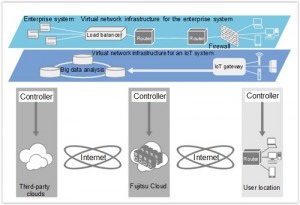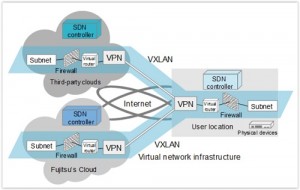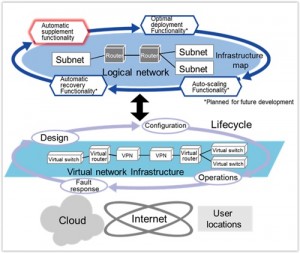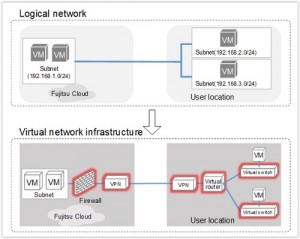4 mins read
Fujitsu Develops Technology to Simplify Design and Operation of Hybrid- and Multi-Cloud Network Infrastructure

December 19, 2024
Copyright 2023, IT Voice Media Pvt. Ltd.
All Rights Reserved

 Fujitsu Laboratories Ltd. and Fujitsu Laboratories of America, Inc. have developed technology that makes it easy to design, build, and operate virtual network infrastructure that extend across multiple clouds and corporate networks.
Fujitsu Laboratories Ltd. and Fujitsu Laboratories of America, Inc. have developed technology that makes it easy to design, build, and operate virtual network infrastructure that extend across multiple clouds and corporate networks. software technology that abstracts the structural elements of networks in IT infrastructure, and which can collectively design, build, manage, and operate across multiple IT infrastructures. The two companies have confirmed that this technology allows virtual network infrastructure to be built in one-tenth the time required by conventional technology, when it is applied to the design and configuration of the virtual network infrastructure extending across one cloud and a location with a few dozen devices.
software technology that abstracts the structural elements of networks in IT infrastructure, and which can collectively design, build, manage, and operate across multiple IT infrastructures. The two companies have confirmed that this technology allows virtual network infrastructure to be built in one-tenth the time required by conventional technology, when it is applied to the design and configuration of the virtual network infrastructure extending across one cloud and a location with a few dozen devices. In anticipation of an era in which 5G mobile communications and IoT technology become increasingly widespread, there has been a demand for technology that can efficiently provide a variety of services in the cloud in response to diversified needs and requirements.
In anticipation of an era in which 5G mobile communications and IoT technology become increasingly widespread, there has been a demand for technology that can efficiently provide a variety of services in the cloud in response to diversified needs and requirements. developed a technology that models structural elements of IT infrastructure using logical software components to enable key features such as element configuration and operational status monitoring. Using this technology, users can automatically build virtual network infrastructures across multiple instances of IT infrastructure based on the logical network designed by the user. In addition, enabling operations and fault response management of virtual network infrastructures, lifecycle management (design, configuration, operations, and fault response), can also be done on the logical network.
developed a technology that models structural elements of IT infrastructure using logical software components to enable key features such as element configuration and operational status monitoring. Using this technology, users can automatically build virtual network infrastructures across multiple instances of IT infrastructure based on the logical network designed by the user. In addition, enabling operations and fault response management of virtual network infrastructures, lifecycle management (design, configuration, operations, and fault response), can also be done on the logical network.